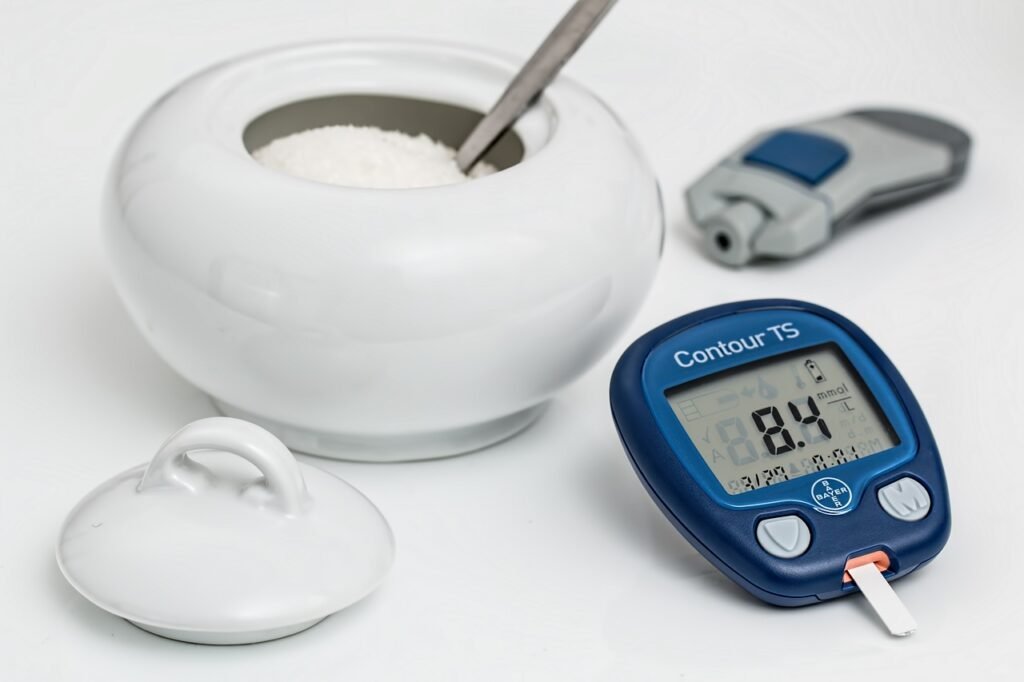Unlock the keys to preventing diabetes through this detailed guide. Explore early diabetes symptoms, delve into the distinctions between type 1 and type 2 diabetes, and discover the impact of continuous glucose monitoring and a diabetic diet. Learn how a proactive approach, coupled with proper blood sugar monitoring, can significantly reduce the risk of developing diabetes.
- Introduction
- Understanding Diabetes Symptoms
- Differentiating Between Type 1 and Type 2 Diabetes
- The Role of Continuous Glucose Monitoring in Prevention
- Crafting a Diabetic Diet for Prevention
- Embracing an Active Lifestyle
- Regular Exercise as a Preventive Measure
- Importance of Maintaining a Healthy Weight
- Blood Sugar Monitoring for Prevention
- Frequently Asked Questions
- Conclusion
Empowering Health: A Comprehensive Guide on How to Prevent Diabetes

In a world where health takes center stage, understanding how to prevent diabetes becomes crucial. This comprehensive guide unravels the intricacies of diabetes prevention, exploring symptoms, types, and actionable steps individuals can take to reduce their risk.
Understanding Diabetes Symptoms
- Increased Thirst: Excessive thirst can be an early indicator of potential diabetes.
- Frequent Urination: Diabetes often presents with an increased frequency of urination.
- Unexplained Weight Loss: Sudden weight loss without an apparent cause may signal the need for diabetes screening.
- Fatigue: Persistent fatigue can be a symptom, emphasizing the importance of recognizing these signs early.
Identifying these symptoms is the first step toward proactive diabetes prevention.
Differentiating Between Type 1 and Type 2 Diabetes
- Type 1 Diabetes:
- Autoimmune condition.
- Onset often in childhood.
- Requires insulin injections for survival.
- Type 2 Diabetes:
- Associated with lifestyle factors.
- Commonly diagnosed in adulthood.
- Management may involve lifestyle modifications, oral medications, and insulin therapy in some cases.
Understanding the distinctions between type 1 and type 2 diabetes aids in tailoring preventive strategies.
The Role of Continuous Glucose Monitoring in Prevention
- Early Detection: Continuous Glucose Monitoring (CGM) facilitates early detection of abnormal blood sugar levels.
- Real-time Insights: CGM provides real-time data, enabling individuals to make timely adjustments to their lifestyle.
- Proactive Management: By adopting CGM, individuals can proactively manage their health, reducing the risk of developing diabetes.
Incorporating continuous glucose monitoring into preventive measures enhances overall health awareness.
Crafting a Diabetic Diet for Prevention
- Balanced Nutrition: Prioritize whole grains, lean proteins, fruits, and vegetables.
- Carbohydrate Awareness: Monitor and manage carbohydrate intake for stable blood sugar levels.
- Moderation is Key: Enjoying treats in moderation can be part of a balanced diabetic diet.
A diabetic-friendly diet is a cornerstone in the prevention of diabetes.
Embracing an Active Lifestyle
- Regular Exercise: Incorporating physical activity into daily routines helps maintain overall health.
- Aerobic Exercises: Engage in activities like walking, jogging, or swimming for cardiovascular health.
- Strength Training: Building muscle mass contributes to improved insulin sensitivity.
An active lifestyle plays a pivotal role in diabetes prevention.
Regular Exercise as a Preventive Measure
- Moderate Exercise: Aim for at least 150 minutes of moderate-intensity exercise per week.
- Consistency is Key: Regular, consistent exercise is more beneficial than sporadic intense workouts.
- Choose Activities You Enjoy: Making exercise enjoyable increases the likelihood of adherence.
Incorporating regular exercise into one’s routine is a proactive measure against diabetes.
Importance of Maintaining a Healthy Weight
- Body Mass Index (BMI): Aim for a BMI within the healthy range.
- Weight Management: Maintaining a healthy weight reduces the risk of insulin resistance.
- Consultation with Healthcare Professionals: Seek guidance on achieving and maintaining a healthy weight.
Maintaining a healthy weight is instrumental in diabetes prevention.
Blood Sugar Monitoring for Prevention
- Regular Checks: Periodic blood sugar monitoring provides insights into overall health.
- Understanding Trends: Monitoring trends in blood sugar levels helps in proactive health management.
- Seek Professional Guidance: Consult healthcare professionals for personalized advice on blood sugar monitoring.
Regular blood sugar monitoring is a preventive tool for early intervention and risk reduction.
Frequently Asked Questions
Q1: Can diabetes be prevented if it runs in the family? A1: While genetics play a role, lifestyle modifications, including a healthy diet and regular exercise, can significantly reduce the risk of developing diabetes.
Q2: Is there an age limit for diabetes prevention strategies to be effective? A2: No, preventive strategies are effective at any age. It’s never too early or too late to adopt a healthy lifestyle.
Q3: How often should blood sugar be monitored for prevention? A3: The frequency of blood sugar monitoring varies, but periodic checks, especially for those at higher risk, are advisable.
Conclusion
In conclusion, empowering oneself with knowledge on how to prevent diabetes involves a holistic approach. From recognizing early symptoms to understanding the differences between type 1 and type 2 diabetes, incorporating continuous glucose monitoring, adopting a diabetic-friendly diet, embracing an active lifestyle, maintaining a healthy weight, and regular blood sugar monitoring, individuals can take proactive steps towards diabetes prevention. This comprehensive guide serves as a roadmap for those aspiring to safeguard their health and well-being through informed and actionable choices.



